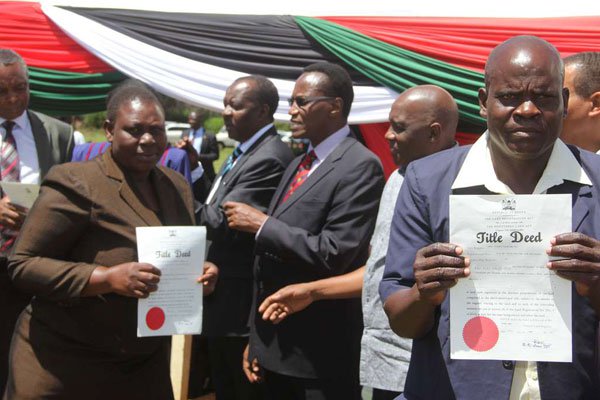Resource information
Kenya’s land governance system is fashioned to facilitate land expropriation for the few and powerful who continue to resist reforms.
This is despite the fact that the dynamics of land reform are driven by apprehensions of mischief associated with the history that explains why the National Land Commission was established with mandate, independent of the Executive.
CAPITALISM
From the British conquest, Kenya’s land governance system was never meant to be inclusionary and equitable.
The colonialists designed it to expropriate land for a politically powerful minority to facilitate European settlement and colonial, capitalist development.
This social, economic and political mischief around land has led to layers of problematic allocations.
TJRC REPORT
And, in turn, this has generated high levels of contestation around land, whose ramifications are documented in the Truth Justice and Reconciliation Commission report of 2013, whose implementation is still in limbo.
The counter-reform resistance has produced bureaucratic and legal mechanisms that have enabled and facilitated unaccountable land allocations and transactions from colonial time to the present.
LAND GRABBING
This is what shapes the current institutional land governance dynamics, privileging powerful networks of political brokers and beneficiaries.
These networks push the land governance system into a path of dependency that does not favour land reform, but rather perpetuates land grabbing.
This is because networks that have benefited and continue to benefit from the status quo in the land governance system are in positions of power and actively work to undermine reforms that would hold them to account or reduce illegal and irregular access to land.
TITLE DEEDS
Thus, by generating grievance and exclusionary material conditions, this system provokes efforts to subvert the transformation of the system.
For instance, the current land titling process, though critical for the development of our agrarian economy, is being undertaken in such a way to defeat any effort of coming up with a registration system for the whole country as provided by the Constitution.
Today, despite the claim of over three million titles issued, there is no publicly available registration list of beneficiaries and the lands, which have been registered.
REVOKE TITLES
Consequently, when NLC comes up with a list of titles to be revoked, everyone is in panic, yet the same names are in the Ndung’u Commission report released in 2004.
What the citizens should worry about is not the incomplete list but who will execute NLC’s recommendation of revoking the titles.
The recommendation for revocation of titles to a disengaged executive on the campaign trail amounts to nothing.
Instead, there is a need for pressures for change from different actors.
LAND REFORMS
Efforts of a few reformers to change the rules of the game over land and make it more accountable are currently producing response by counter-reformers who are using a variety of tactics to resist change.
The outcome is far from certain but how this complex historical struggle pans out will have wide-reaching implications.
Indeed, after the politicisation of land that was part of the 2007/2008 post-election violence that convulsed Kenya leading to mass displacement, economic disruption and more than 1,000 deaths, a window of opportunity was created for land reforms through the Sessional Paper No 3 of 2009 on National Land Policy, and Chapter 5 of the 2010 Constitution.
POLICY
The policies, laws and the institutions created out of them reflect an ambitious attempt by civil society and government reformers to reorganise existing land governance by dispersing power and bringing land issues into a more open realm of “public reasoning” to quote Indian economist Amartya Sen.
This begs the question: what is the politics of Kenya’s land governance reforms and can it be transformative?
Early assessments are pessimistic. Some legal scholars have pointed to the hurried, top-down and exclusive nature of the process around writing the new land laws and the contradictions in and problems with laws from such a flawed process.
RESTRUCTURE
Concern also exists on the way these reforms manifest themselves in local politics and decentralisation — replicating old patterns of dispossession and accumulation.
A critical analysis of Kenya’s present land governance system and the current struggle over its transformation reveals that the reform process is not in line with the recommendations of the Framework and Guidelines on Land Policy in Africa adopted in 2009 and committed to by African Heads of State and Government.
The recommended reforms involve comprehensive restructuring or redesign of at least three components of the land system: its property structure, use and production structure and the support services infrastructure.


